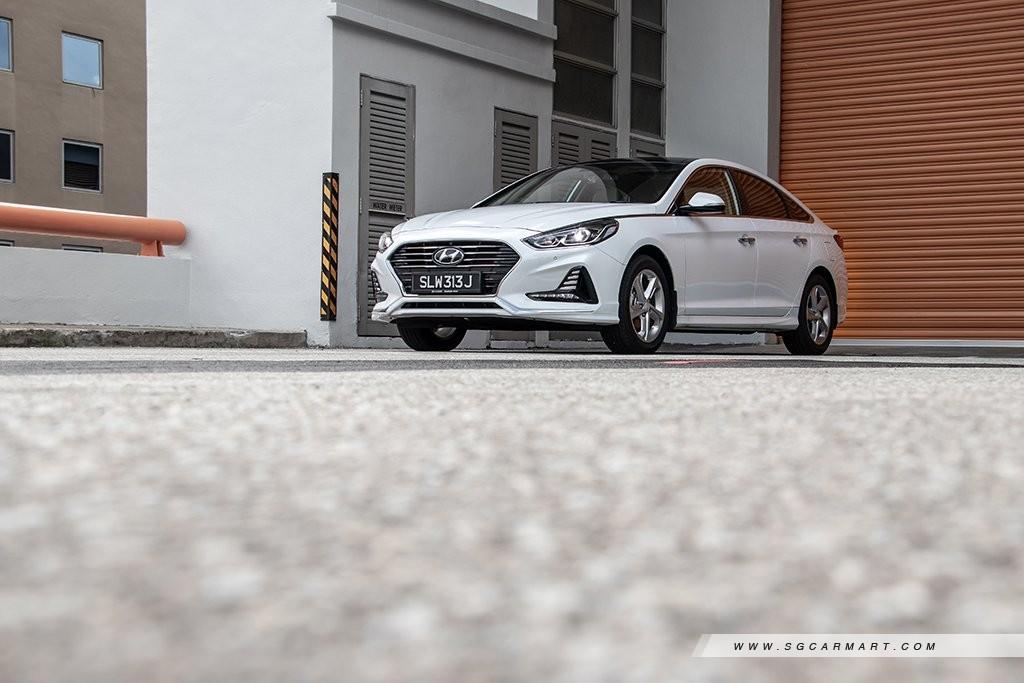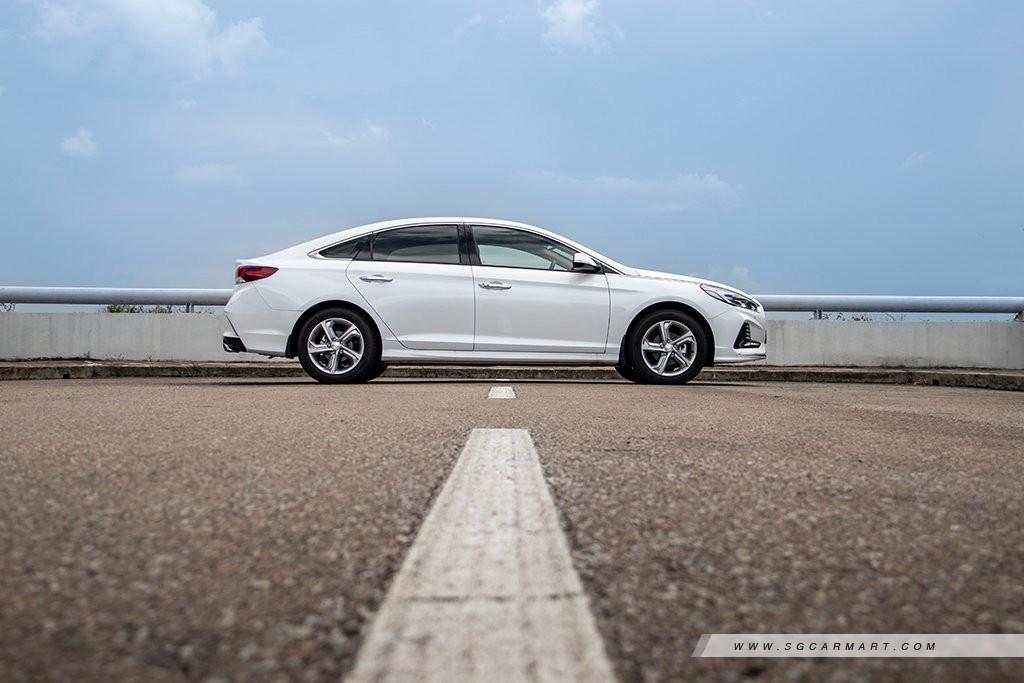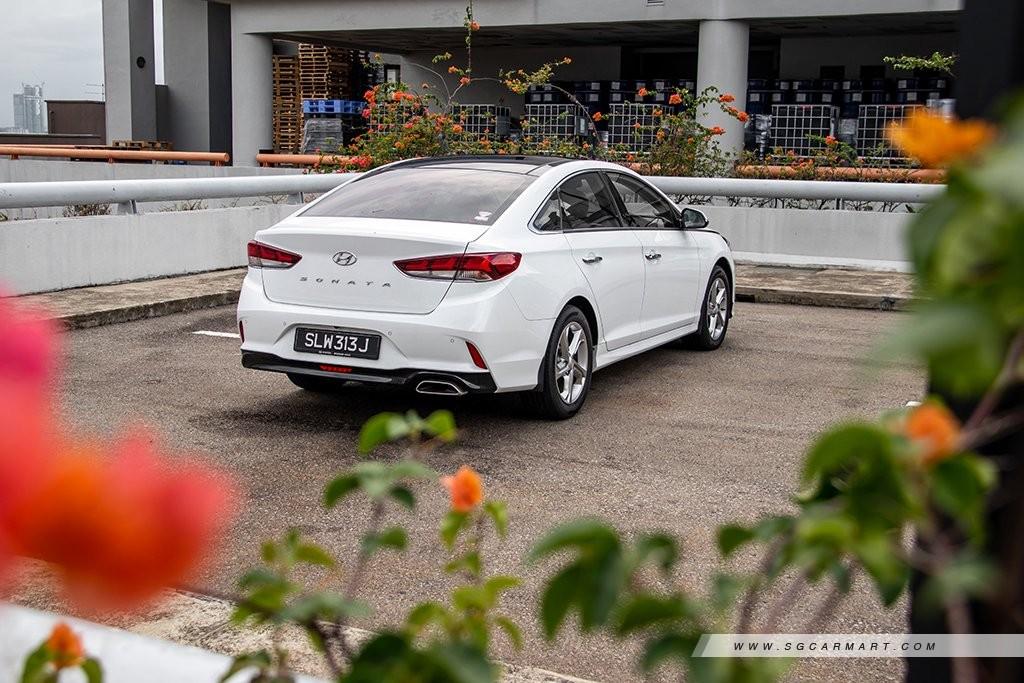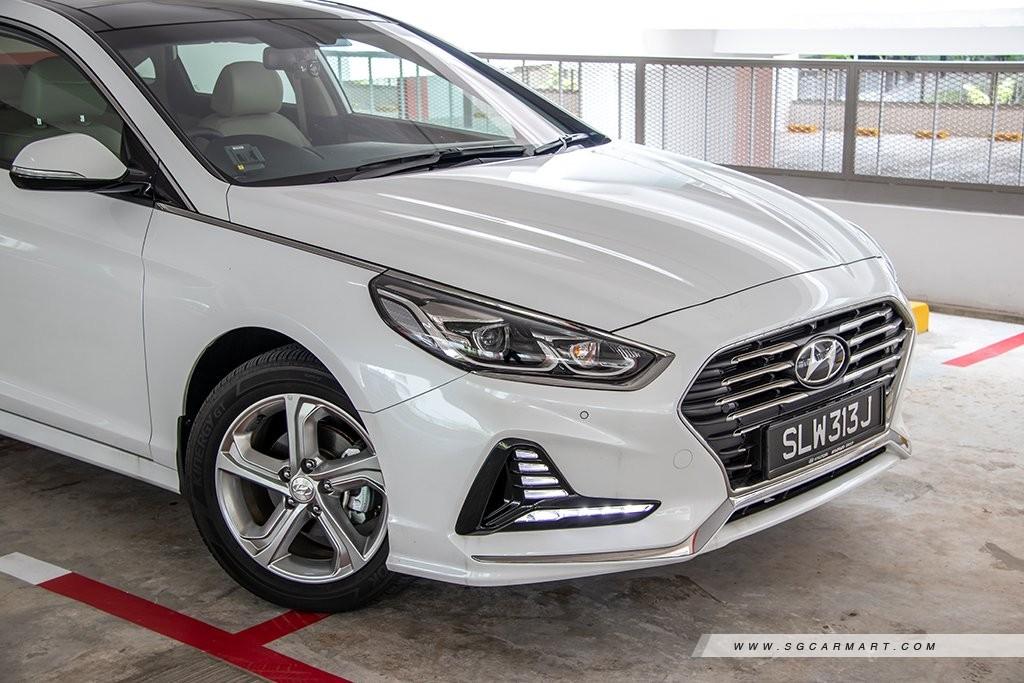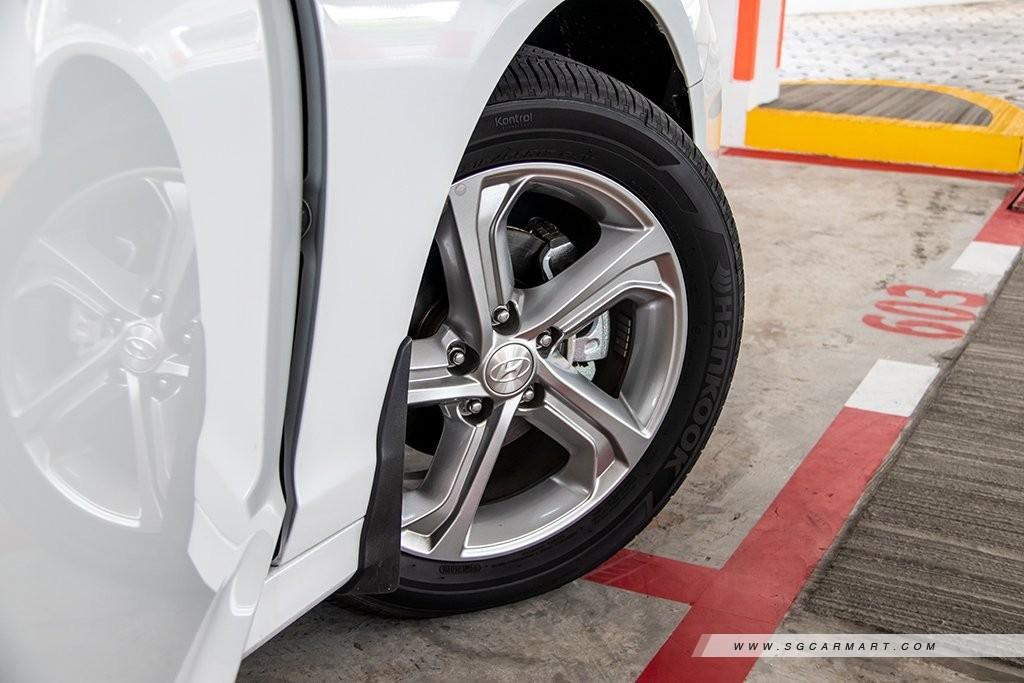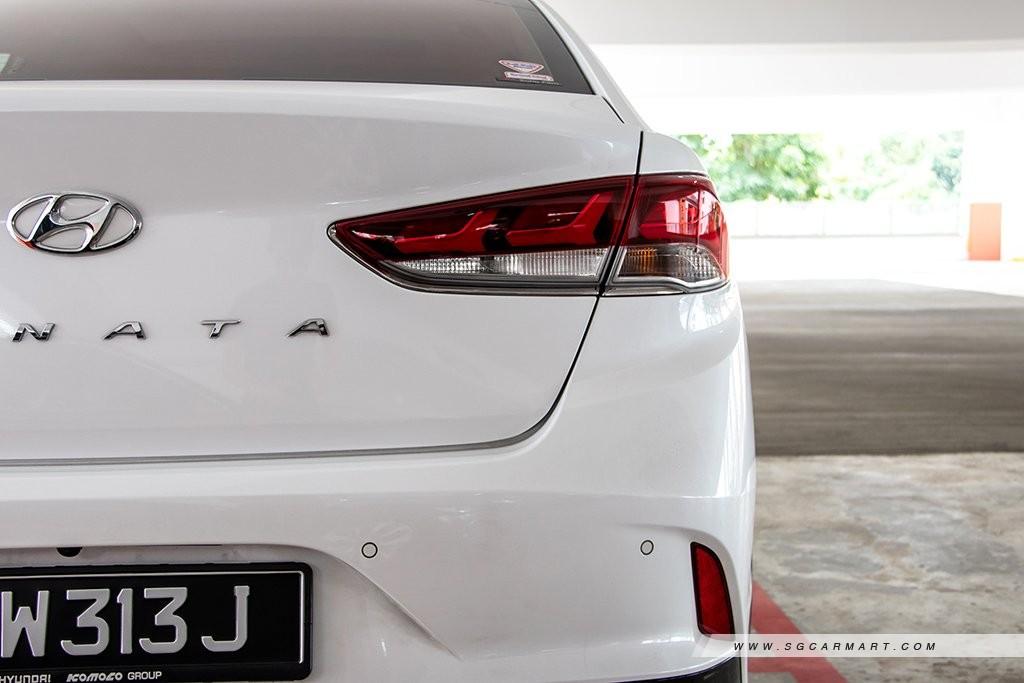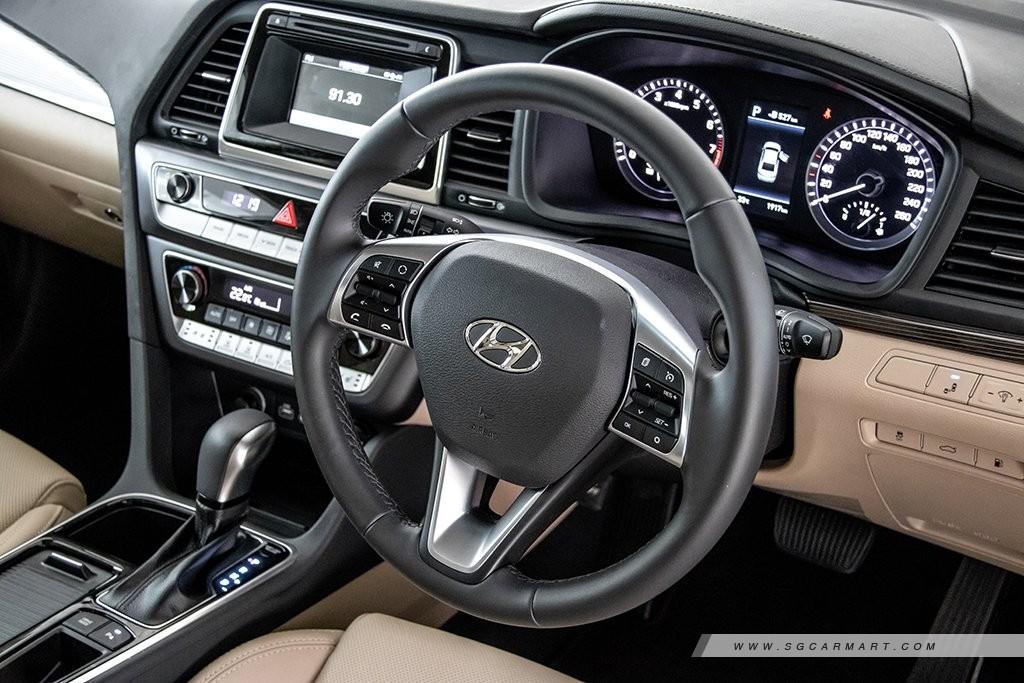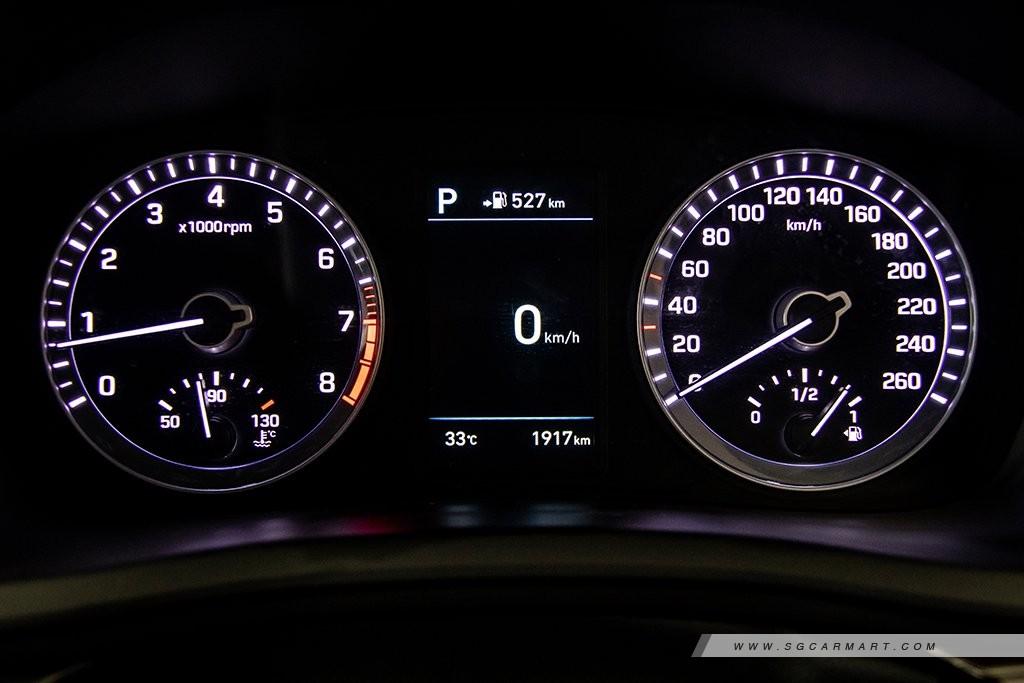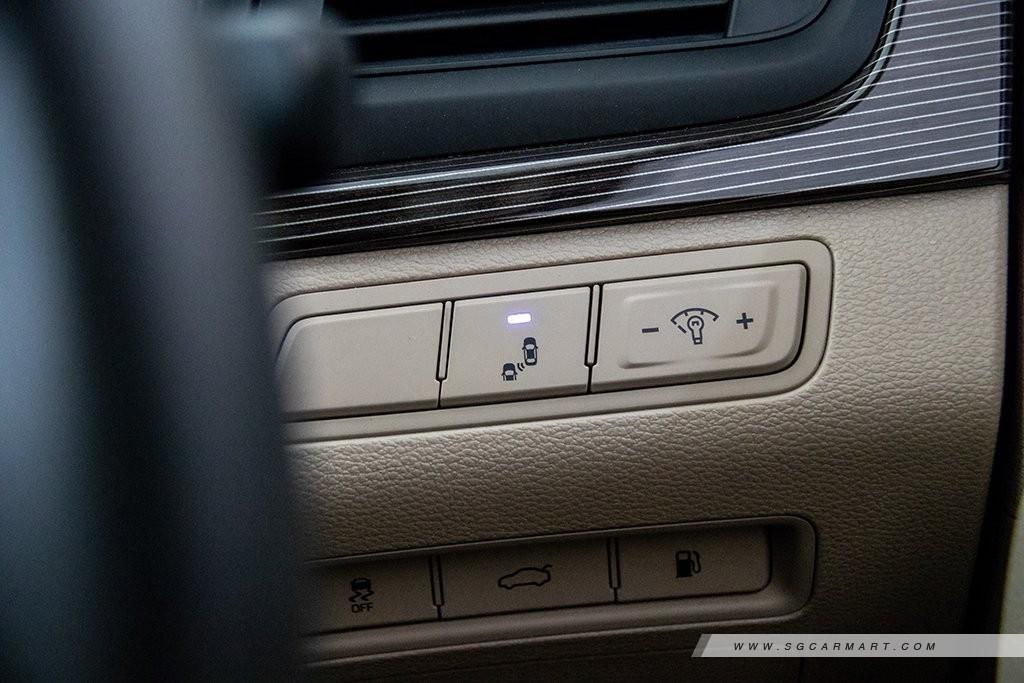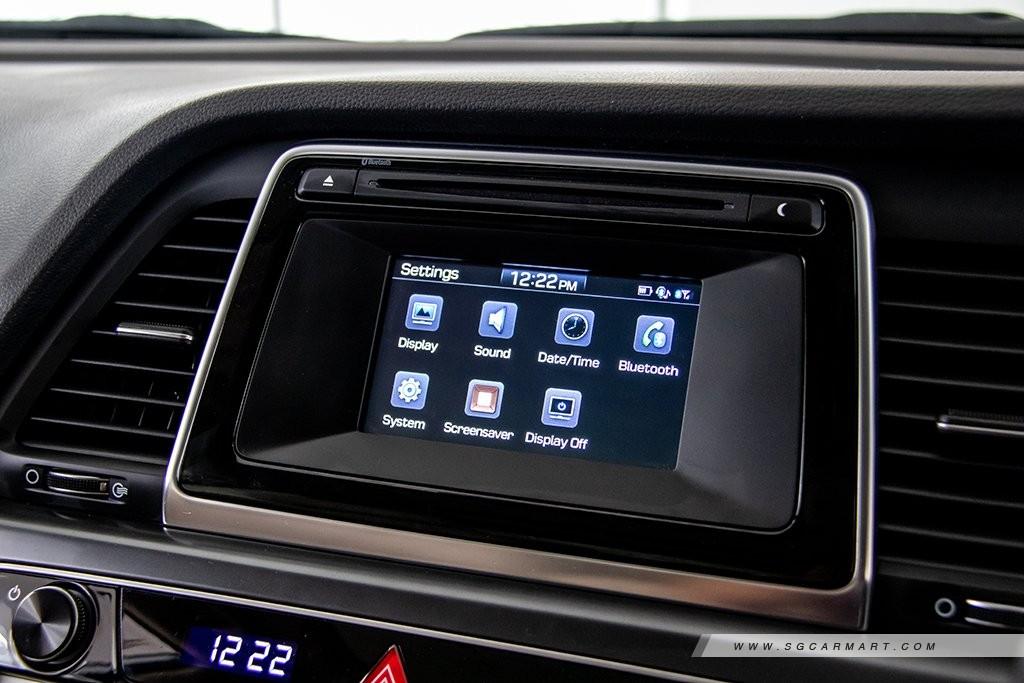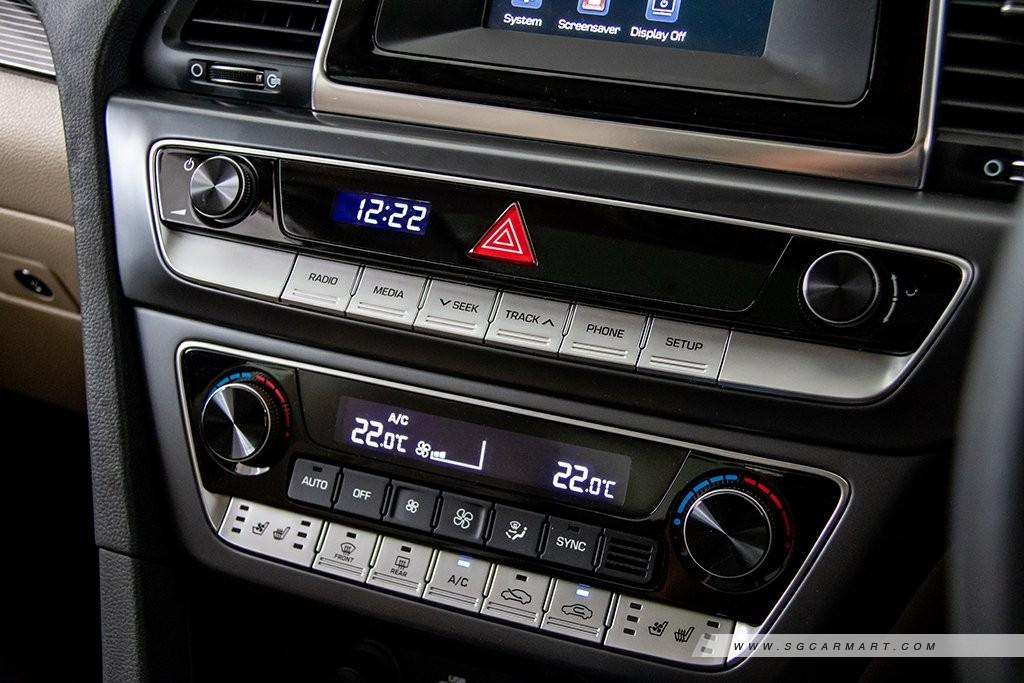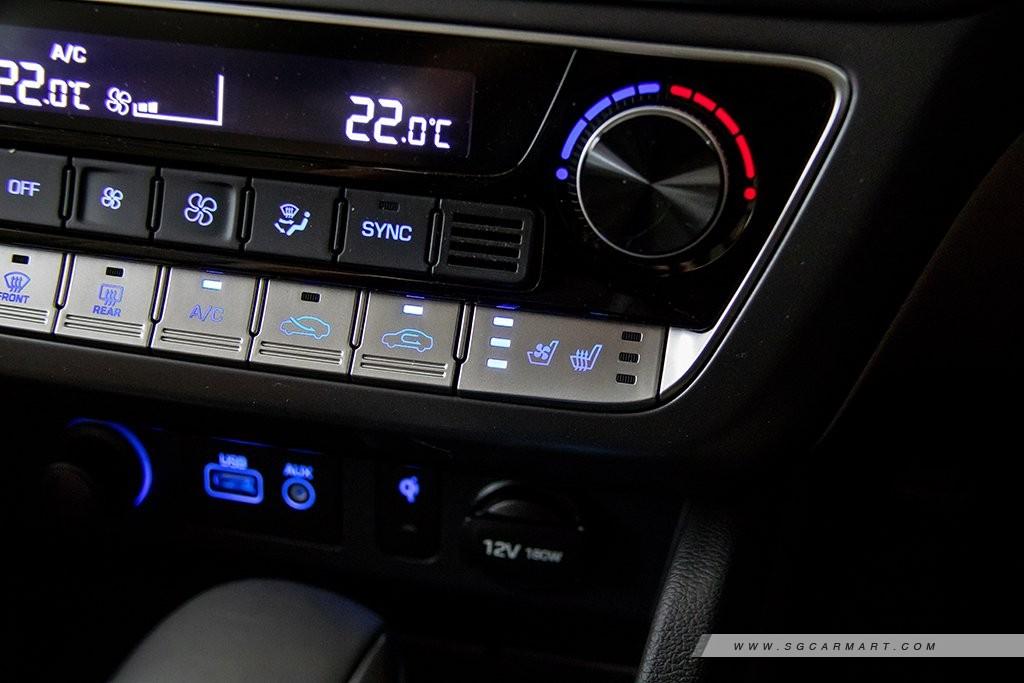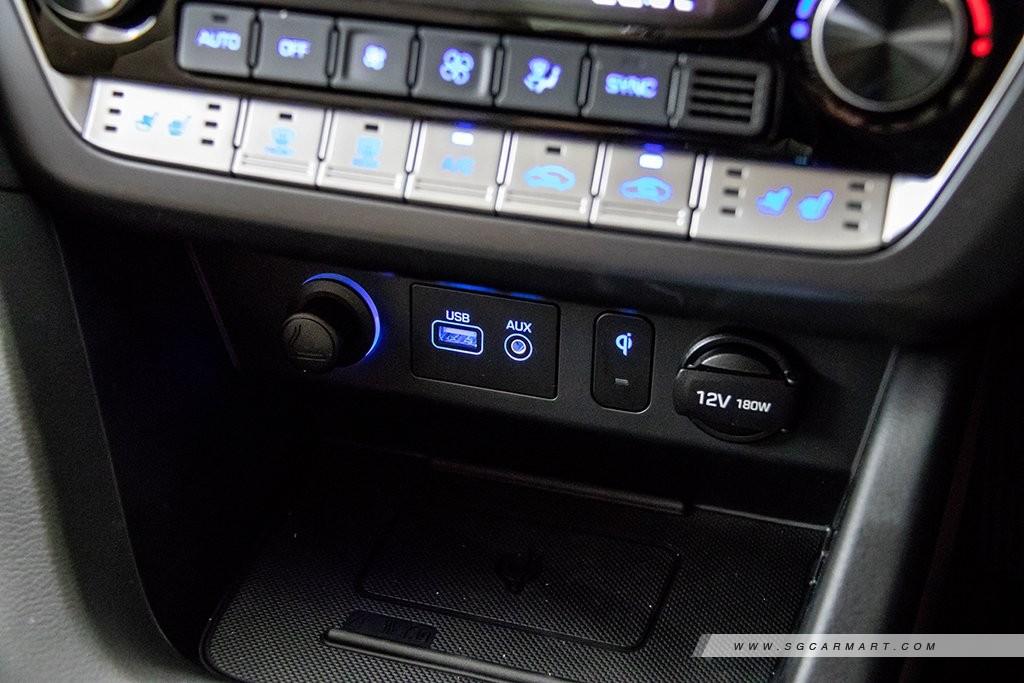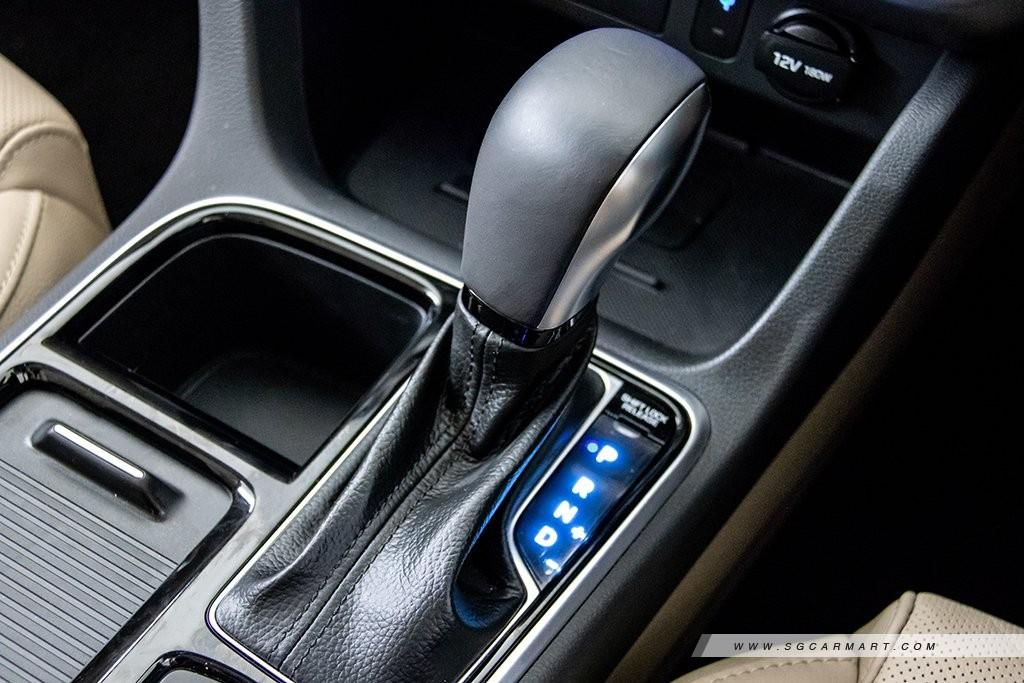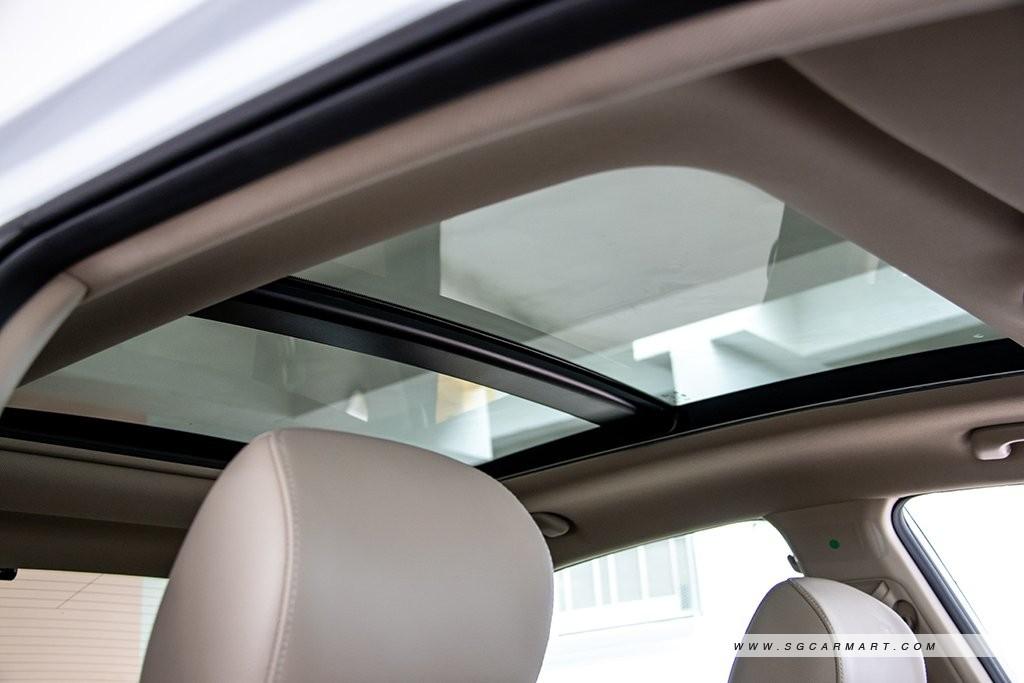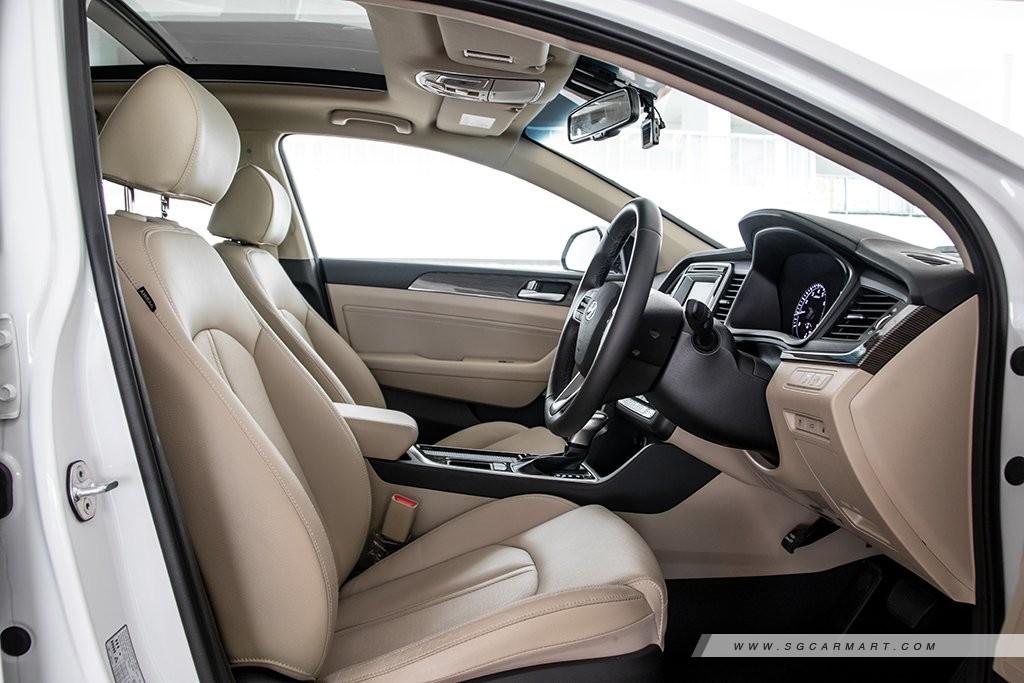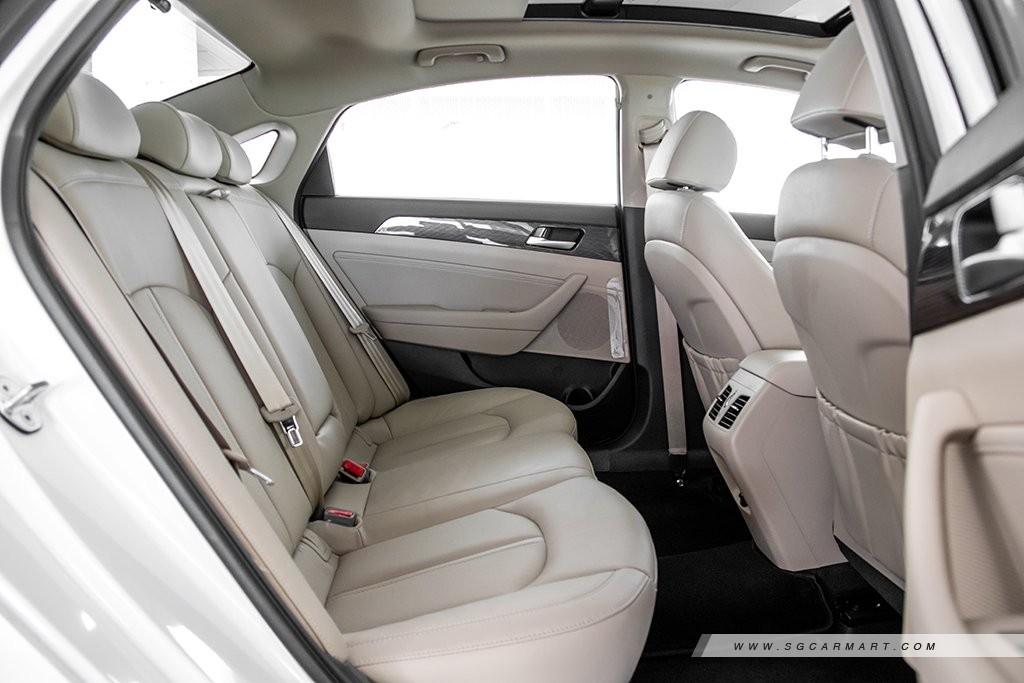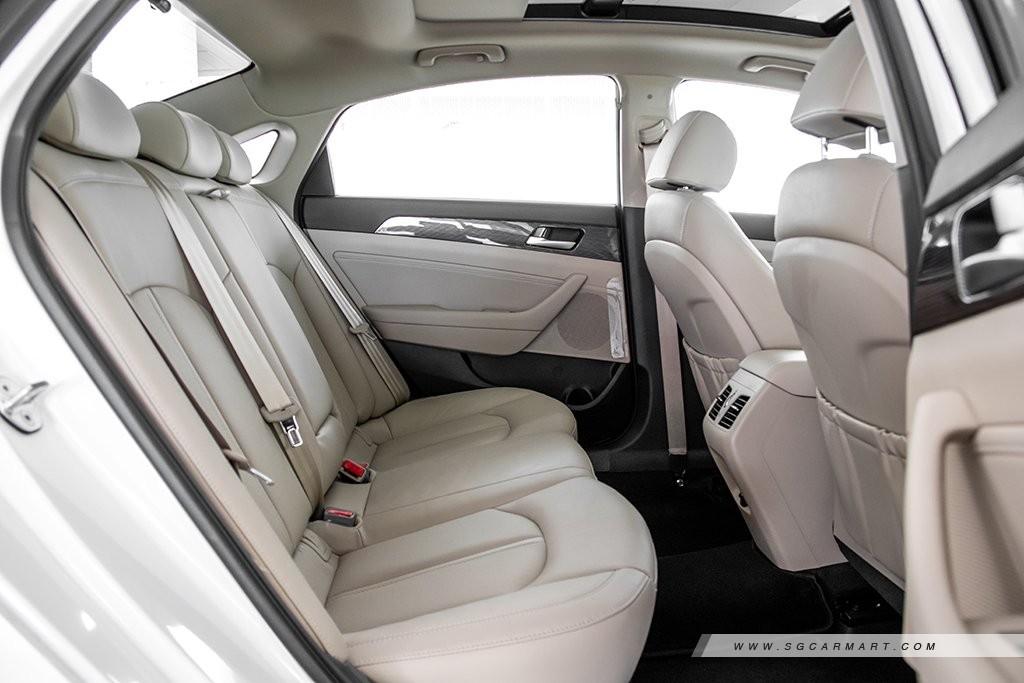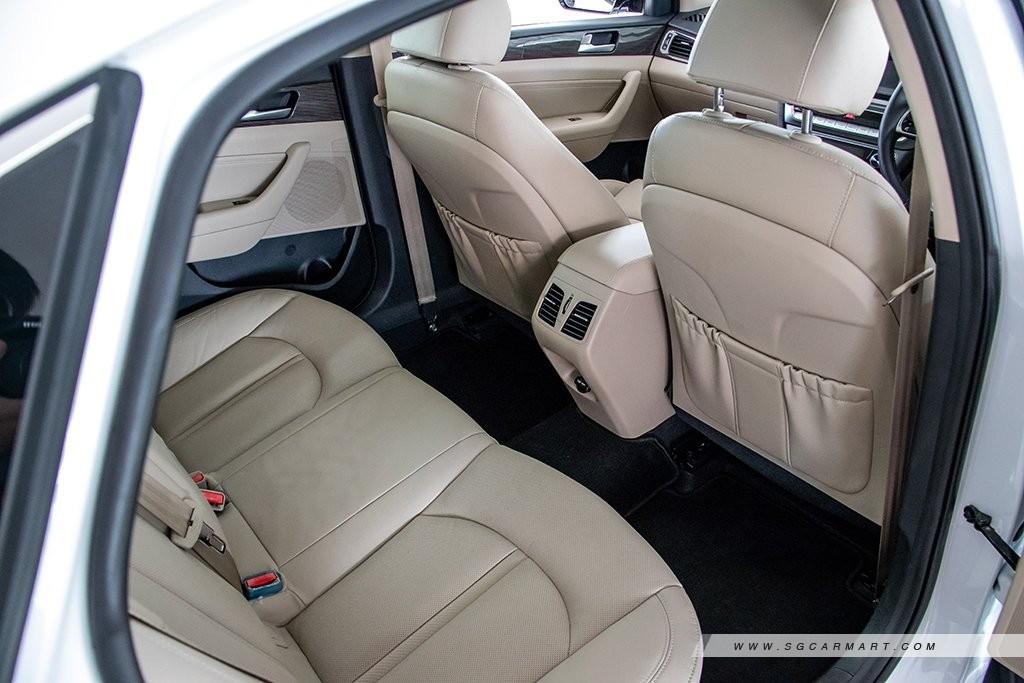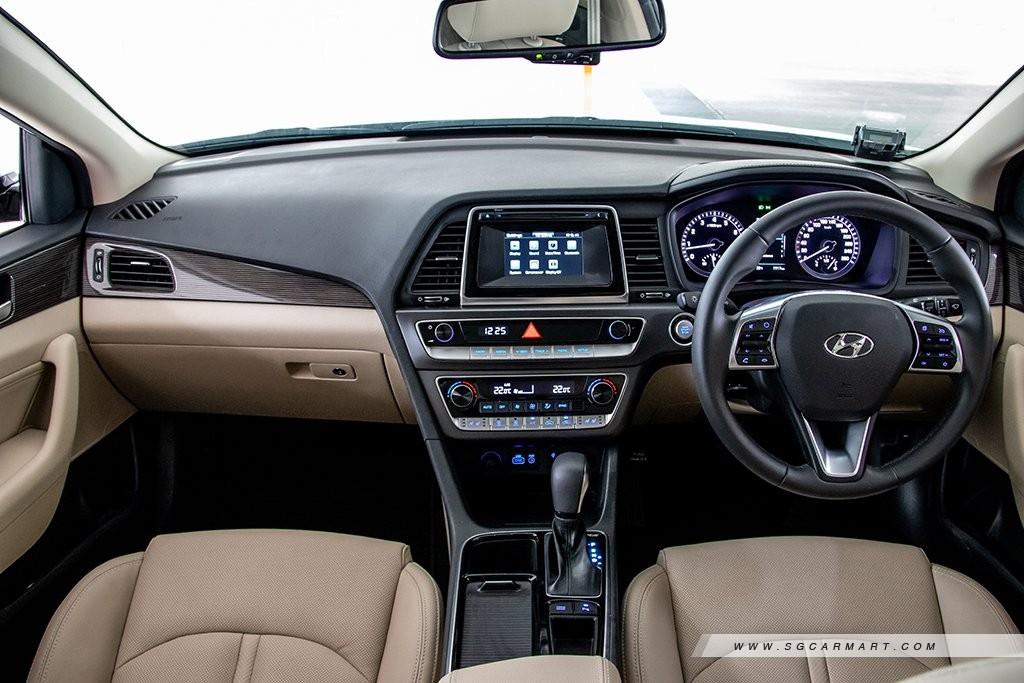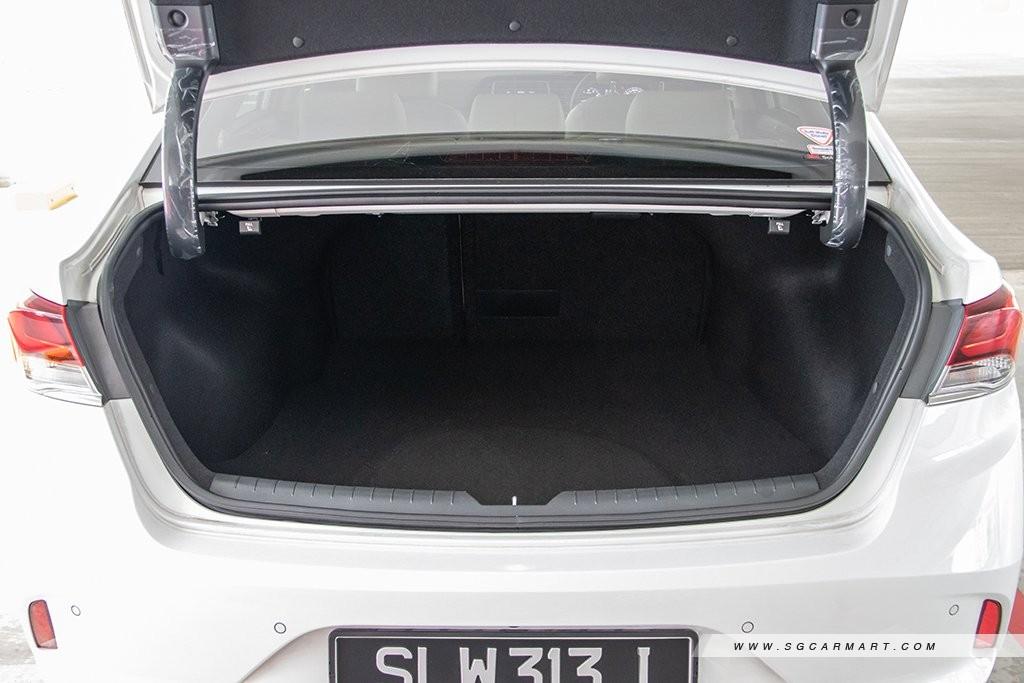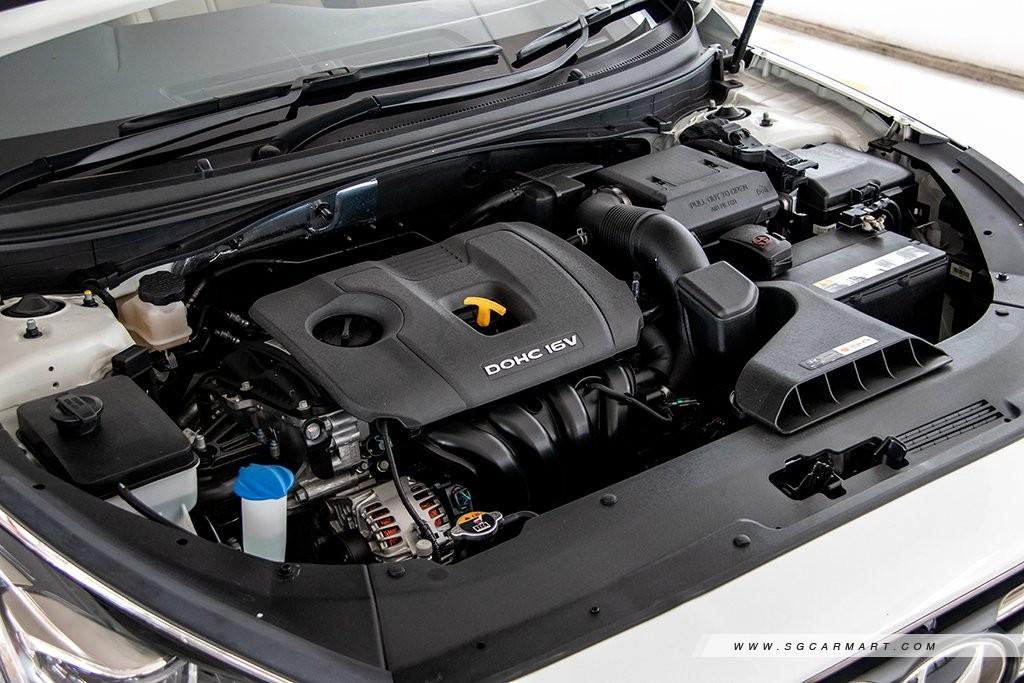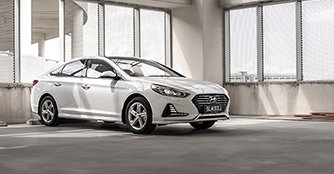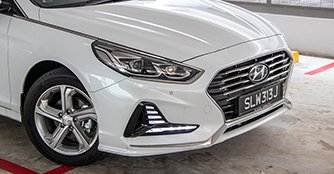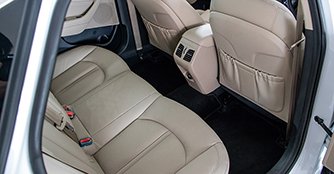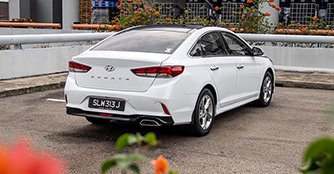Hyundai Sonata VIII 2.0 GLS Sunroof (A) Facelift Review
09 May 2018|23,825 views
Facelift (What's New)
Heavily redesigned exterior
Trunk release button housed behind the rear badge
Redesigned instrument cluster and updated steering wheel
Revised centre console controls
Blind Sport Detection and Rear Cross Traffic Alert
Retweaked suspension and retuned steering
The seventh generation Hyundai Sonata was launched back in 2015. Three years on, the car has undergone a significant facelift, which brings with it a wealth of improvements.
Looks nice
The first thing you notice is the way the car looks. This new design approach from Hyundai is all about raising the level of sophistication of the Sonata. It's sharper, sleeker, and more contemporary-looking.
In fact, with its sharp lines, clean angles and the way the nose dips slightly, it looks rather good. If you squint your eyes, it may even bear a passing resemblance to the Audi A4, especially the hexagonal shape of the 'Cascading Grille' and the chrome trimming around the windows.
Feels nice
The interior of the updated Sonata feels much improved. The materials feel good to the touch, and the build quality is genuinely solid. And as far as practicality is concerned, there's generous space inside, especially at the rear.
However, we do have some qualms. First is the infotainment screen. It's a tad small, considering Hyundai have bigger options (as seen in the Kona). This is especially pronounced because the 4.2-inch LCD screen is housed within a housing that clearly accommodates a much larger screen (up to 8.0-inches). Also, a foot parking brake feels surprisingly old school when even the i30 has an electronic parking brake.
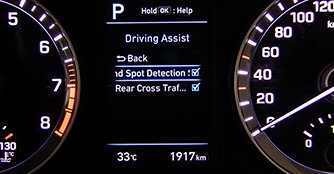
 The Sonata comes equipped with driver assistance systems including Bling Spot Detection and Rear Cross Traffic Alert
The Sonata comes equipped with driver assistance systems including Bling Spot Detection and Rear Cross Traffic Alert
Drives nice
But all that are small quibbles once you start considering the high levels of comfort and refinement of the Sonata. Hyundai engineers has tweaked the bushings on the rear multi-linked suspension, which has resulted in improved damping and increased composure on uneven surfaces.
The ride is comfortable, well-damped and entirely pleasant, and the cabin is quiet and well-insulated. The retuned steering is also heavier, offering a greater sense of stability on highways, while still being easy to pilot around bendy roads.
There's decent enough equipment, too. As part of the Hyundai Smart Sense package, you get Auto Cruise Control, Blind Spot Detection, Rear Cross Traffic Alert, Electronic Stability Programme with Hill Assist Control, as well as a Front and Rear Parking Assist system.
Looks nice
The first thing you notice is the way the car looks. This new design approach from Hyundai is all about raising the level of sophistication of the Sonata. It's sharper, sleeker, and more contemporary-looking.
In fact, with its sharp lines, clean angles and the way the nose dips slightly, it looks rather good. If you squint your eyes, it may even bear a passing resemblance to the Audi A4, especially the hexagonal shape of the 'Cascading Grille' and the chrome trimming around the windows.
Feels nice
The interior of the updated Sonata feels much improved. The materials feel good to the touch, and the build quality is genuinely solid. And as far as practicality is concerned, there's generous space inside, especially at the rear.
However, we do have some qualms. First is the infotainment screen. It's a tad small, considering Hyundai have bigger options (as seen in the Kona). This is especially pronounced because the 4.2-inch LCD screen is housed within a housing that clearly accommodates a much larger screen (up to 8.0-inches). Also, a foot parking brake feels surprisingly old school when even the i30 has an electronic parking brake.

Drives nice
But all that are small quibbles once you start considering the high levels of comfort and refinement of the Sonata. Hyundai engineers has tweaked the bushings on the rear multi-linked suspension, which has resulted in improved damping and increased composure on uneven surfaces.
The ride is comfortable, well-damped and entirely pleasant, and the cabin is quiet and well-insulated. The retuned steering is also heavier, offering a greater sense of stability on highways, while still being easy to pilot around bendy roads.
There's decent enough equipment, too. As part of the Hyundai Smart Sense package, you get Auto Cruise Control, Blind Spot Detection, Rear Cross Traffic Alert, Electronic Stability Programme with Hill Assist Control, as well as a Front and Rear Parking Assist system.
Driven with a light foot, you really can't have any complains about the Sonata. However, mash the throttle and the key shortcoming of the Sonata becomes evident - there's just not a lot of power. The 2.0-litre Naturally Aspirated (NA) engine coughs out a modest 150bhp and 192Nm of torque. We'd have preferred a more powerful engine variant, such as the 1.6-litre turbocharged engine found in the Kona, which produces a healthy 174bhp and 265Nm.
Could be even nicer
The Hyundai Sonata is slightly perplexing, because it feels both modern yet old school at the same time. We like its modern looks, upgraded interior and much more refined drive. And yet, some parts of the car just feel a little old fashioned, such as the decision to use an NA engine over a turbo one. We wonder if this was a conscious choice by the brand, to make the car slightly cheaper and more accessible to the kind of buyer that would buy this car. You know, to leave parts of the old car in that an existing owner would undoubtedly recognise.
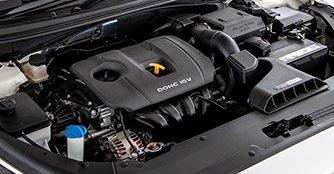
 The 2.0-litre engine produces a very modest 150bhp and 192Nm of torque, best suited to the unhurried driver
The 2.0-litre engine produces a very modest 150bhp and 192Nm of torque, best suited to the unhurried driver
In a way, this makes sense, especially for a family car. People want it to feel familiar, and any radical changes (such as putting in a turbocharged engine, for example) may actually turn away these buyers.
In truth, there are easy ways to greatly improve the Sonata (at least in our books), with tools already at Hyundai's disposal. In fact, all the complaints that we have with this car, Hyundai already has solutions implemented in other cars in its range.
The Sonata is a very solid, practical and sensible family car. The facelift has brought with it a raft of improvements that make the Sonata feel more premium, and it's certainly better to drive. Judged on its own merits, it's good, no doubt about it. However, knowing what else Hyundai already has in its arsenal, it could have been even better, and we think it's a pity Hyundai didn't go even further with the improvements.
Could be even nicer
The Hyundai Sonata is slightly perplexing, because it feels both modern yet old school at the same time. We like its modern looks, upgraded interior and much more refined drive. And yet, some parts of the car just feel a little old fashioned, such as the decision to use an NA engine over a turbo one. We wonder if this was a conscious choice by the brand, to make the car slightly cheaper and more accessible to the kind of buyer that would buy this car. You know, to leave parts of the old car in that an existing owner would undoubtedly recognise.

In a way, this makes sense, especially for a family car. People want it to feel familiar, and any radical changes (such as putting in a turbocharged engine, for example) may actually turn away these buyers.
In truth, there are easy ways to greatly improve the Sonata (at least in our books), with tools already at Hyundai's disposal. In fact, all the complaints that we have with this car, Hyundai already has solutions implemented in other cars in its range.
The Sonata is a very solid, practical and sensible family car. The facelift has brought with it a raft of improvements that make the Sonata feel more premium, and it's certainly better to drive. Judged on its own merits, it's good, no doubt about it. However, knowing what else Hyundai already has in its arsenal, it could have been even better, and we think it's a pity Hyundai didn't go even further with the improvements.
Facelift (What's New)
Heavily redesigned exterior
Trunk release button housed behind the rear badge
Redesigned instrument cluster and updated steering wheel
Revised centre console controls
Blind Sport Detection and Rear Cross Traffic Alert
Retweaked suspension and retuned steering
The seventh generation Hyundai Sonata was launched back in 2015. Three years on, the car has undergone a significant facelift, which brings with it a wealth of improvements.
Looks nice
The first thing you notice is the way the car looks. This new design approach from Hyundai is all about raising the level of sophistication of the Sonata. It's sharper, sleeker, and more contemporary-looking.
In fact, with its sharp lines, clean angles and the way the nose dips slightly, it looks rather good. If you squint your eyes, it may even bear a passing resemblance to the Audi A4, especially the hexagonal shape of the 'Cascading Grille' and the chrome trimming around the windows.
Feels nice
The interior of the updated Sonata feels much improved. The materials feel good to the touch, and the build quality is genuinely solid. And as far as practicality is concerned, there's generous space inside, especially at the rear.
However, we do have some qualms. First is the infotainment screen. It's a tad small, considering Hyundai have bigger options (as seen in the Kona). This is especially pronounced because the 4.2-inch LCD screen is housed within a housing that clearly accommodates a much larger screen (up to 8.0-inches). Also, a foot parking brake feels surprisingly old school when even the i30 has an electronic parking brake.

 The Sonata comes equipped with driver assistance systems including Bling Spot Detection and Rear Cross Traffic Alert
The Sonata comes equipped with driver assistance systems including Bling Spot Detection and Rear Cross Traffic Alert
Drives nice
But all that are small quibbles once you start considering the high levels of comfort and refinement of the Sonata. Hyundai engineers has tweaked the bushings on the rear multi-linked suspension, which has resulted in improved damping and increased composure on uneven surfaces.
The ride is comfortable, well-damped and entirely pleasant, and the cabin is quiet and well-insulated. The retuned steering is also heavier, offering a greater sense of stability on highways, while still being easy to pilot around bendy roads.
There's decent enough equipment, too. As part of the Hyundai Smart Sense package, you get Auto Cruise Control, Blind Spot Detection, Rear Cross Traffic Alert, Electronic Stability Programme with Hill Assist Control, as well as a Front and Rear Parking Assist system.
Looks nice
The first thing you notice is the way the car looks. This new design approach from Hyundai is all about raising the level of sophistication of the Sonata. It's sharper, sleeker, and more contemporary-looking.
In fact, with its sharp lines, clean angles and the way the nose dips slightly, it looks rather good. If you squint your eyes, it may even bear a passing resemblance to the Audi A4, especially the hexagonal shape of the 'Cascading Grille' and the chrome trimming around the windows.
Feels nice
The interior of the updated Sonata feels much improved. The materials feel good to the touch, and the build quality is genuinely solid. And as far as practicality is concerned, there's generous space inside, especially at the rear.
However, we do have some qualms. First is the infotainment screen. It's a tad small, considering Hyundai have bigger options (as seen in the Kona). This is especially pronounced because the 4.2-inch LCD screen is housed within a housing that clearly accommodates a much larger screen (up to 8.0-inches). Also, a foot parking brake feels surprisingly old school when even the i30 has an electronic parking brake.

Drives nice
But all that are small quibbles once you start considering the high levels of comfort and refinement of the Sonata. Hyundai engineers has tweaked the bushings on the rear multi-linked suspension, which has resulted in improved damping and increased composure on uneven surfaces.
The ride is comfortable, well-damped and entirely pleasant, and the cabin is quiet and well-insulated. The retuned steering is also heavier, offering a greater sense of stability on highways, while still being easy to pilot around bendy roads.
There's decent enough equipment, too. As part of the Hyundai Smart Sense package, you get Auto Cruise Control, Blind Spot Detection, Rear Cross Traffic Alert, Electronic Stability Programme with Hill Assist Control, as well as a Front and Rear Parking Assist system.
Driven with a light foot, you really can't have any complains about the Sonata. However, mash the throttle and the key shortcoming of the Sonata becomes evident - there's just not a lot of power. The 2.0-litre Naturally Aspirated (NA) engine coughs out a modest 150bhp and 192Nm of torque. We'd have preferred a more powerful engine variant, such as the 1.6-litre turbocharged engine found in the Kona, which produces a healthy 174bhp and 265Nm.
Could be even nicer
The Hyundai Sonata is slightly perplexing, because it feels both modern yet old school at the same time. We like its modern looks, upgraded interior and much more refined drive. And yet, some parts of the car just feel a little old fashioned, such as the decision to use an NA engine over a turbo one. We wonder if this was a conscious choice by the brand, to make the car slightly cheaper and more accessible to the kind of buyer that would buy this car. You know, to leave parts of the old car in that an existing owner would undoubtedly recognise.

 The 2.0-litre engine produces a very modest 150bhp and 192Nm of torque, best suited to the unhurried driverIn a way, this makes sense, especially for a family car. People want it to feel familiar, and any radical changes (such as putting in a turbocharged engine, for example) may actually turn away these buyers.
The 2.0-litre engine produces a very modest 150bhp and 192Nm of torque, best suited to the unhurried driverIn a way, this makes sense, especially for a family car. People want it to feel familiar, and any radical changes (such as putting in a turbocharged engine, for example) may actually turn away these buyers.
In truth, there are easy ways to greatly improve the Sonata (at least in our books), with tools already at Hyundai's disposal. In fact, all the complaints that we have with this car, Hyundai already has solutions implemented in other cars in its range.
The Sonata is a very solid, practical and sensible family car. The facelift has brought with it a raft of improvements that make the Sonata feel more premium, and it's certainly better to drive. Judged on its own merits, it's good, no doubt about it. However, knowing what else Hyundai already has in its arsenal, it could have been even better, and we think it's a pity Hyundai didn't go even further with the improvements.
Could be even nicer
The Hyundai Sonata is slightly perplexing, because it feels both modern yet old school at the same time. We like its modern looks, upgraded interior and much more refined drive. And yet, some parts of the car just feel a little old fashioned, such as the decision to use an NA engine over a turbo one. We wonder if this was a conscious choice by the brand, to make the car slightly cheaper and more accessible to the kind of buyer that would buy this car. You know, to leave parts of the old car in that an existing owner would undoubtedly recognise.

In truth, there are easy ways to greatly improve the Sonata (at least in our books), with tools already at Hyundai's disposal. In fact, all the complaints that we have with this car, Hyundai already has solutions implemented in other cars in its range.
The Sonata is a very solid, practical and sensible family car. The facelift has brought with it a raft of improvements that make the Sonata feel more premium, and it's certainly better to drive. Judged on its own merits, it's good, no doubt about it. However, knowing what else Hyundai already has in its arsenal, it could have been even better, and we think it's a pity Hyundai didn't go even further with the improvements.
Also read our comparison article on:
Hyundai Sonata VIII 2.0 GLS Sunroof vs Volkswagen Passat 1.8 TSI HighlineCar Information
Hyundai Sonata VIII 2.0 GLS (A)
CAT B|Petrol|12.6km/L
Horsepower
112kW (150 bhp)
Torque
192 Nm
Acceleration
11.1sec (0-100km /hr)
This model is no longer being sold by local distributor
All Used Hyundai Sonata VIIIThank You For Your Subscription.

